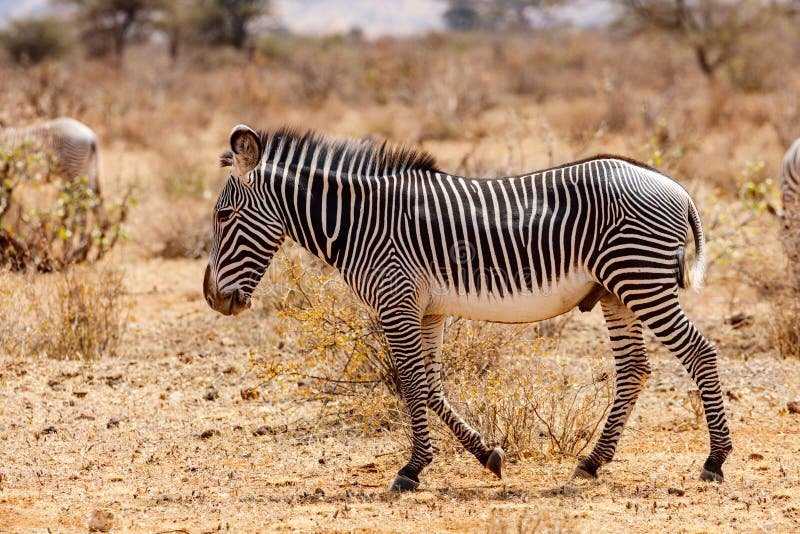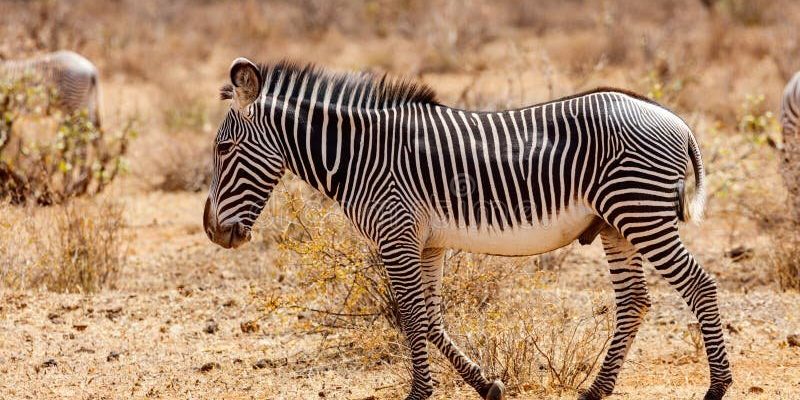
Found mainly in the arid regions of East Africa, Grevy’s zebras face challenges like limited water, extreme temperatures, and predators. So, how do they keep going in these tough conditions? In this article, we’ll explore the fascinating ways these zebras adapt to their environment, ensuring their survival against the odds.
Understanding Grevy’s Zebras
Grevy’s zebras are the largest of all zebra species and are distinct from their more common cousins. With their narrow stripes and a unique pattern on their snouts, they are easy to recognize. Unlike plains zebras, which often live in groups, Grevy’s zebras tend to be more solitary, sometimes forming loose herds. This behavior suits their environment, as food and water can be scarce, forcing them to roam far and wide.
You might be wondering how these zebras are able to find food in such a tough landscape. Their long legs help them cover large distances, which is crucial when searching for edible vegetation. This means they can take advantage of every opportunity to graze, which is vital for their survival.
Water: The Lifeblood of Survival
Water is life, especially in the dry savannas where Grevy’s zebras reside. They need a lot of water, more than other zebras, which means they have to be clever about finding it. Grevy’s zebras have a natural ability to locate water sources, using their keen sense of smell and memory.
During the dry season, when water is especially scarce, their bodies are designed to withstand dehydration. They can tolerate a significant loss of body fluids without succumbing to the stresses dehydration brings. This ability is somewhat like how a camel conserves water in the desert, making Grevy’s zebras extraordinary survivors.
Seasonal Migration
As the rains come and go, so do the zebras. Grevy’s zebras often migrate in search of greener pastures and fresh water. This movement is not just instinctive; it’s vital for their survival. By following the seasonal rains, they find the best grazing spots and ensure they get enough to eat and drink. This migratory behavior also helps them avoid areas that might have too many predators or where resources have been depleted.
These migrations can be dangerous, exposing them to predators like lions or hyenas. However, the rewards often outweigh the risks, as the chance to find plentiful food and water is essential for their survival.
Adaptations to Harsh Weather
Surviving in extreme weather is another challenge for Grevy’s zebras. The temperatures in their habitats can swing from scorching hot during the day to chilly at night. To cope with this, Grevy’s zebras have developed certain adaptations.
For instance, their unique coat serves a dual purpose. The stripes not only help them communicate with each other but also reflect sunlight, keeping them cooler in the heat. When the temperature drops at night, their fur provides insulation, helping them stay warm. Additionally, you’ll often see them seeking shade under trees during the day, a smart strategy to avoid overheating.
Social Behavior and Communication
Social behavior among Grevy’s zebras plays a crucial role in their survival. While they can often be found alone or in small groups, they communicate through various sounds and body language. *Braying* is a common vocalization, signaling everything from distress to mating calls.
By forming loose herds or pairs during certain times of the year, they enhance their chances of survival. This social structure helps them detect predators more quickly, as there’s safety in numbers. Thus, while they may not be as social as other zebra species, their social behaviors are finely tuned to the environments they inhabit.
Dangers from Predators
Despite their many adaptations, Grevy’s zebras still face threats from predators. With their striking appearance, they may seem less vulnerable, but their survival depends on quick reactions and keen senses. They are particularly at risk from large carnivores like lions and hyenas.
To combat this, Grevy’s zebras rely on their speed and agility. When threatened, they can run at high speeds and change direction swiftly, making it harder for predators to catch them. Their strong herd instincts also mean that they can act cooperatively to fend off threats.
Conservation and Future Challenges
Sadly, Grevy’s zebras are now considered endangered, with their populations declining due to habitat loss, competition with livestock, and hunting. Conservation efforts are crucial in protecting these amazing animals and their habitats. Organizations are working to safeguard the areas where Grevy’s zebras roam and to promote coexistence between zebras and local communities.
Efforts like protected reserves, wildlife corridors, and community awareness programs are vital. By understanding these efforts, we can all play a part in ensuring that Grevy’s zebras continue to thrive in their harsh environments.
In conclusion, Grevy’s zebras showcase an incredible ability to survive and adapt in some of the most challenging environments on the planet. Through their unique adaptations, migratory patterns, and social behaviors, they have found ways to thrive where many others might falter.
As we learn more about these captivating creatures, it’s essential to support conservation efforts that help secure their future. By doing so, we not only protect Grevy’s zebras but also ensure the health of the ecosystems they inhabit. After all, nature’s resilience is a lesson for all of us, reminding us that survival often hinges on adaptability and cooperation.

